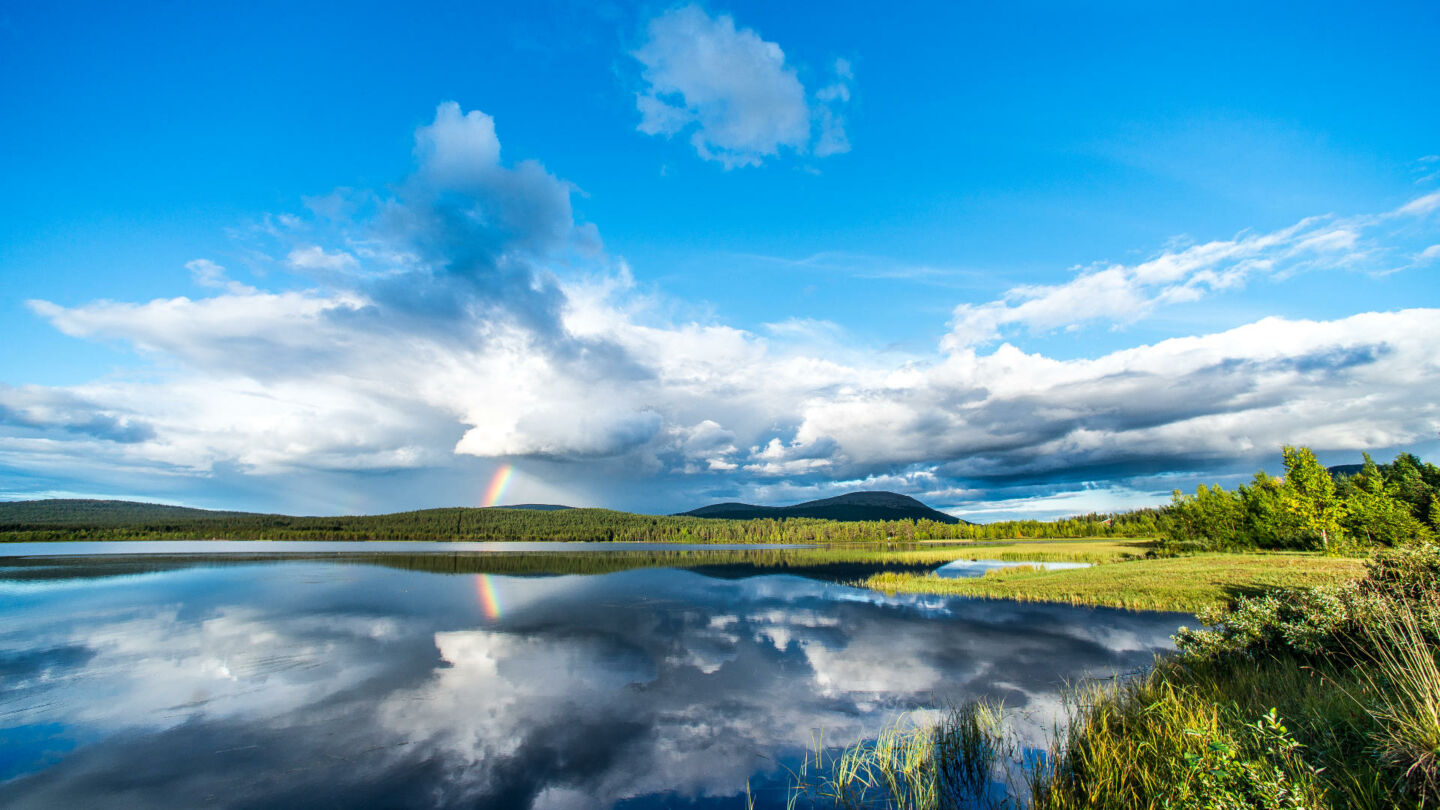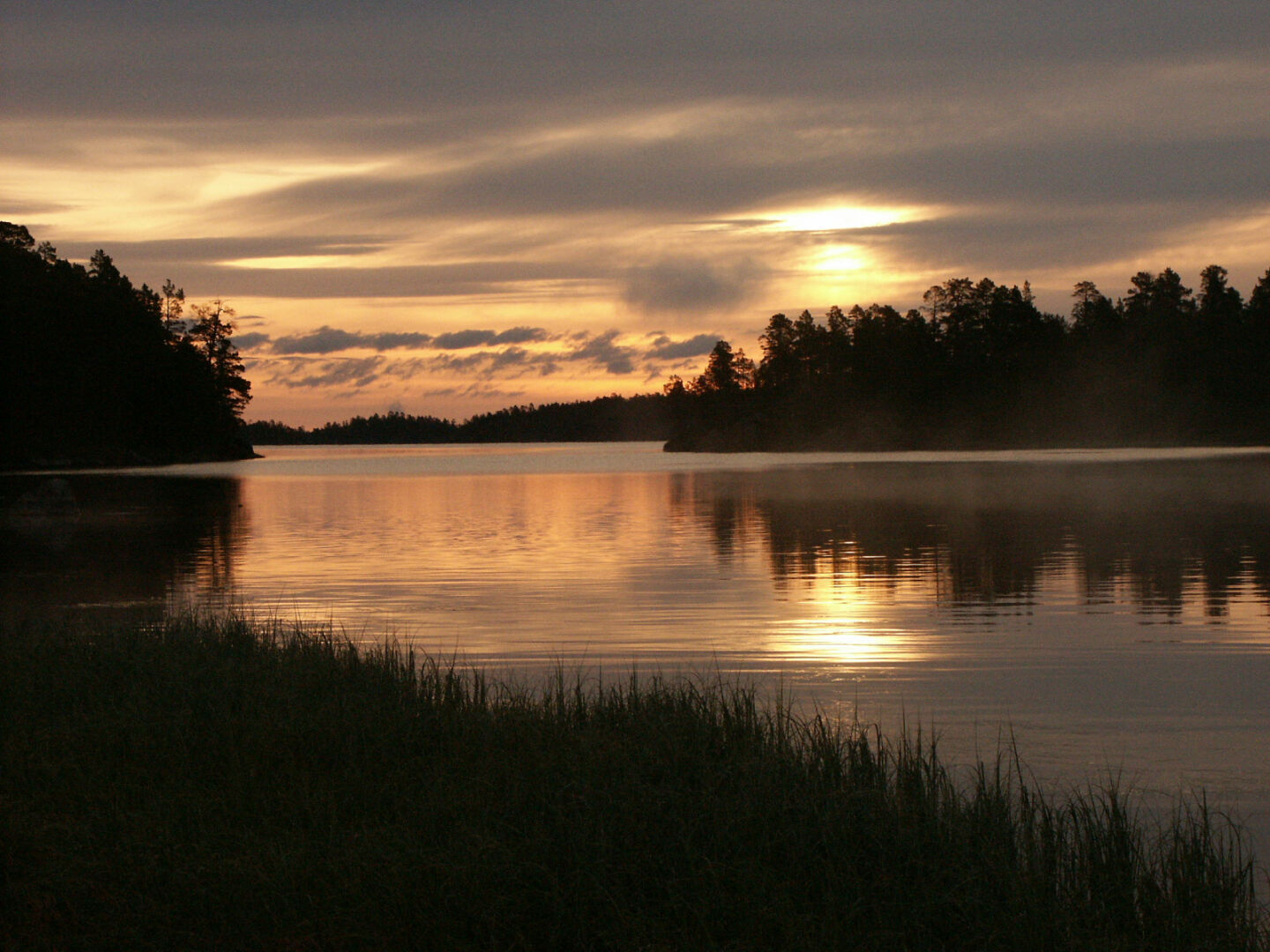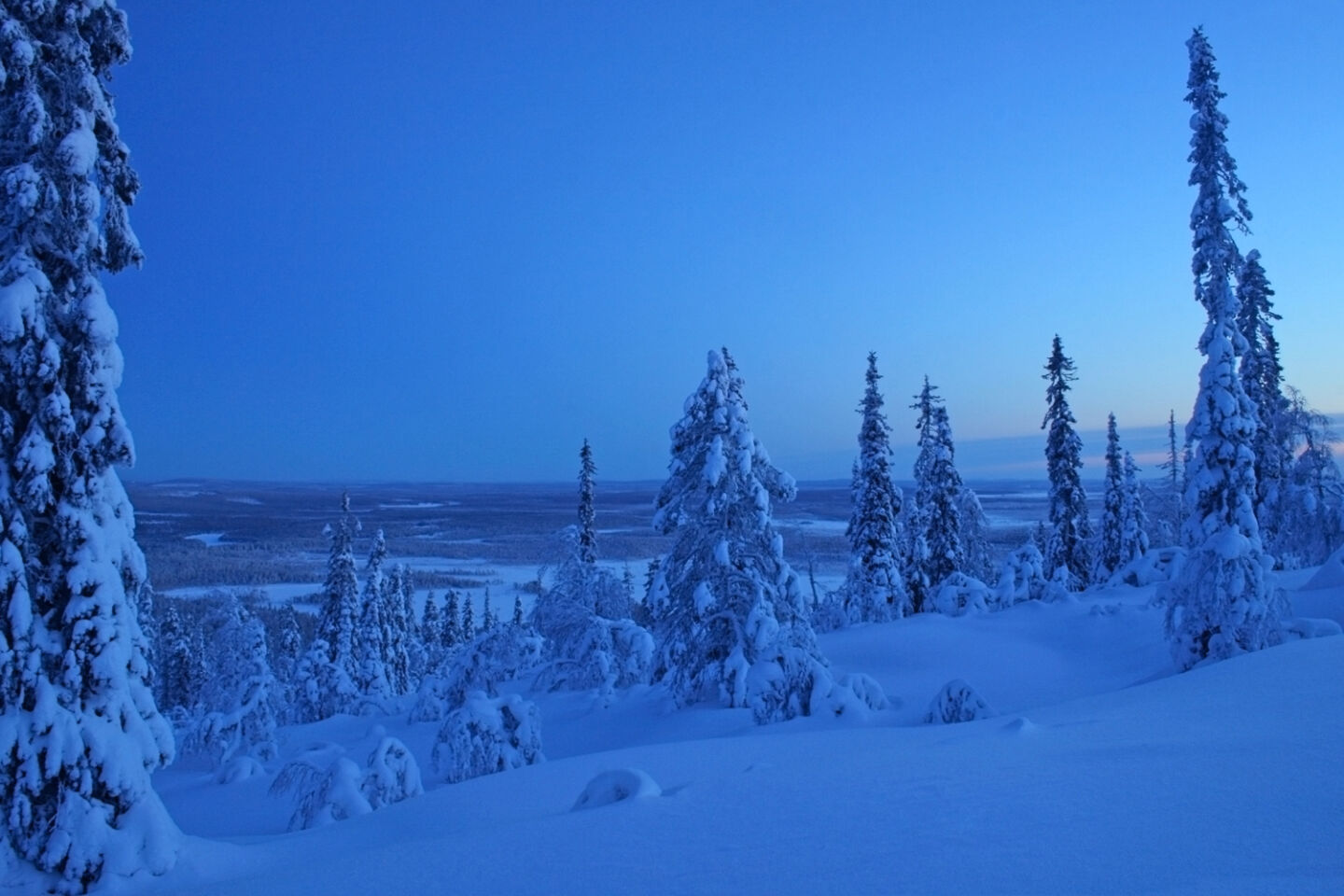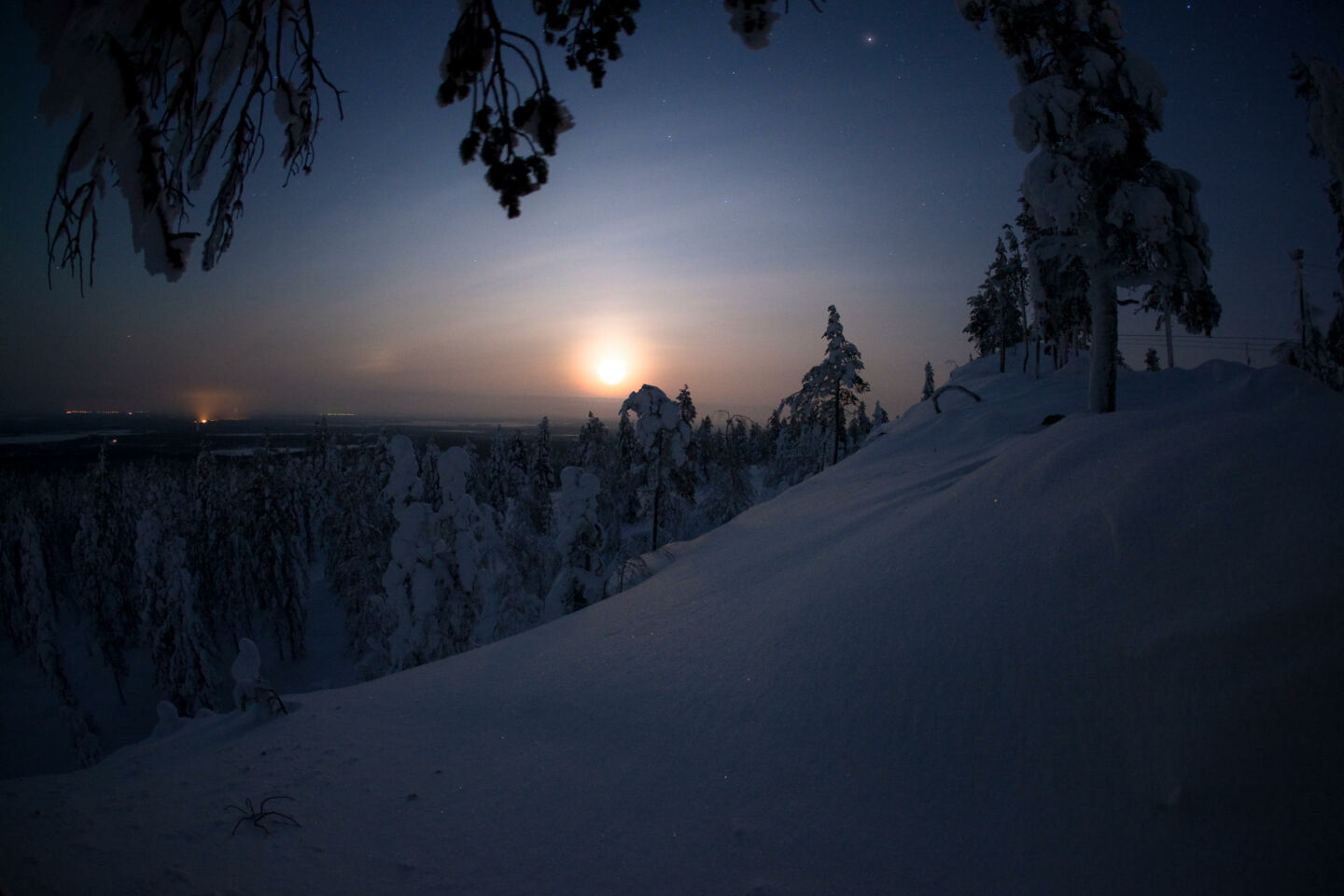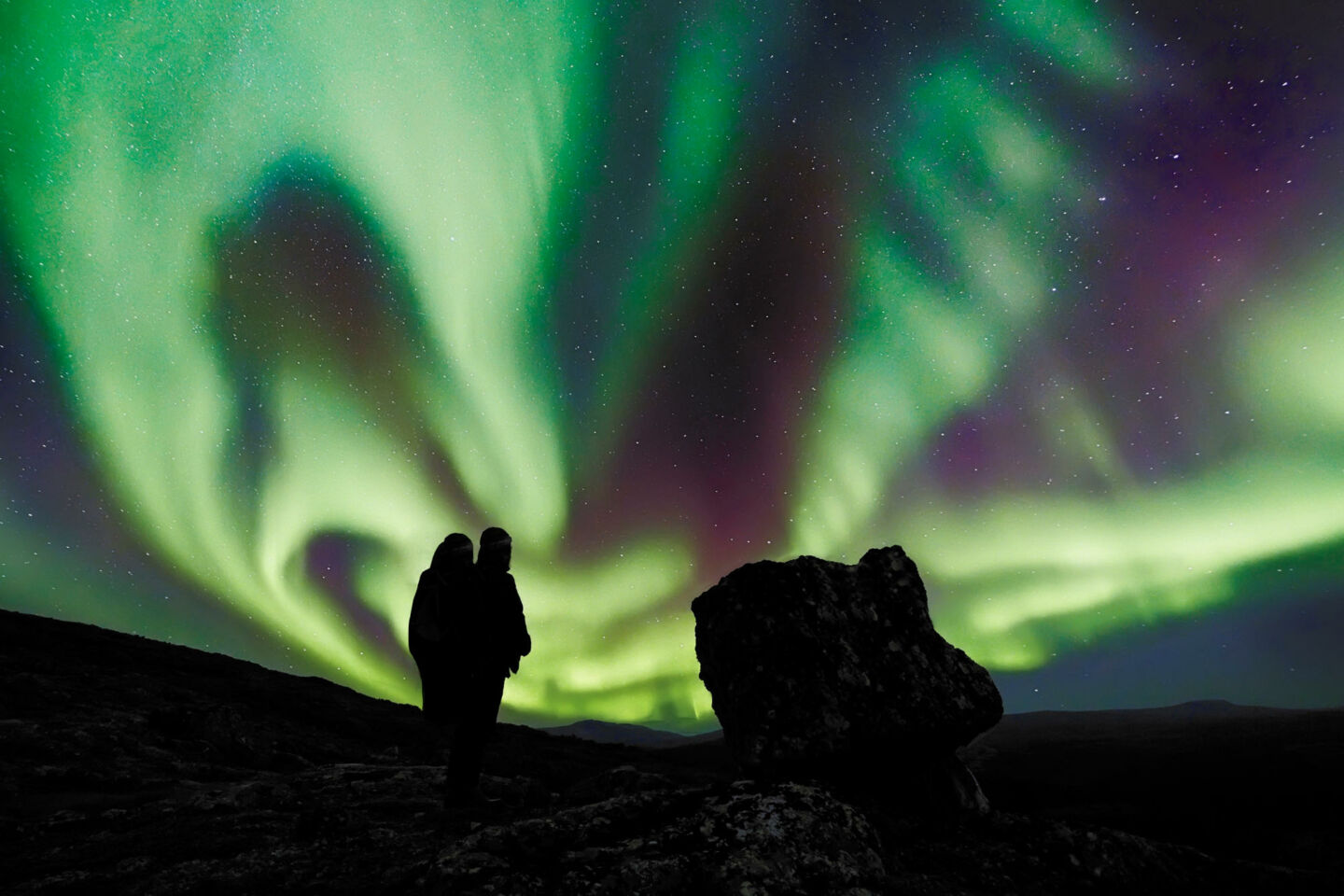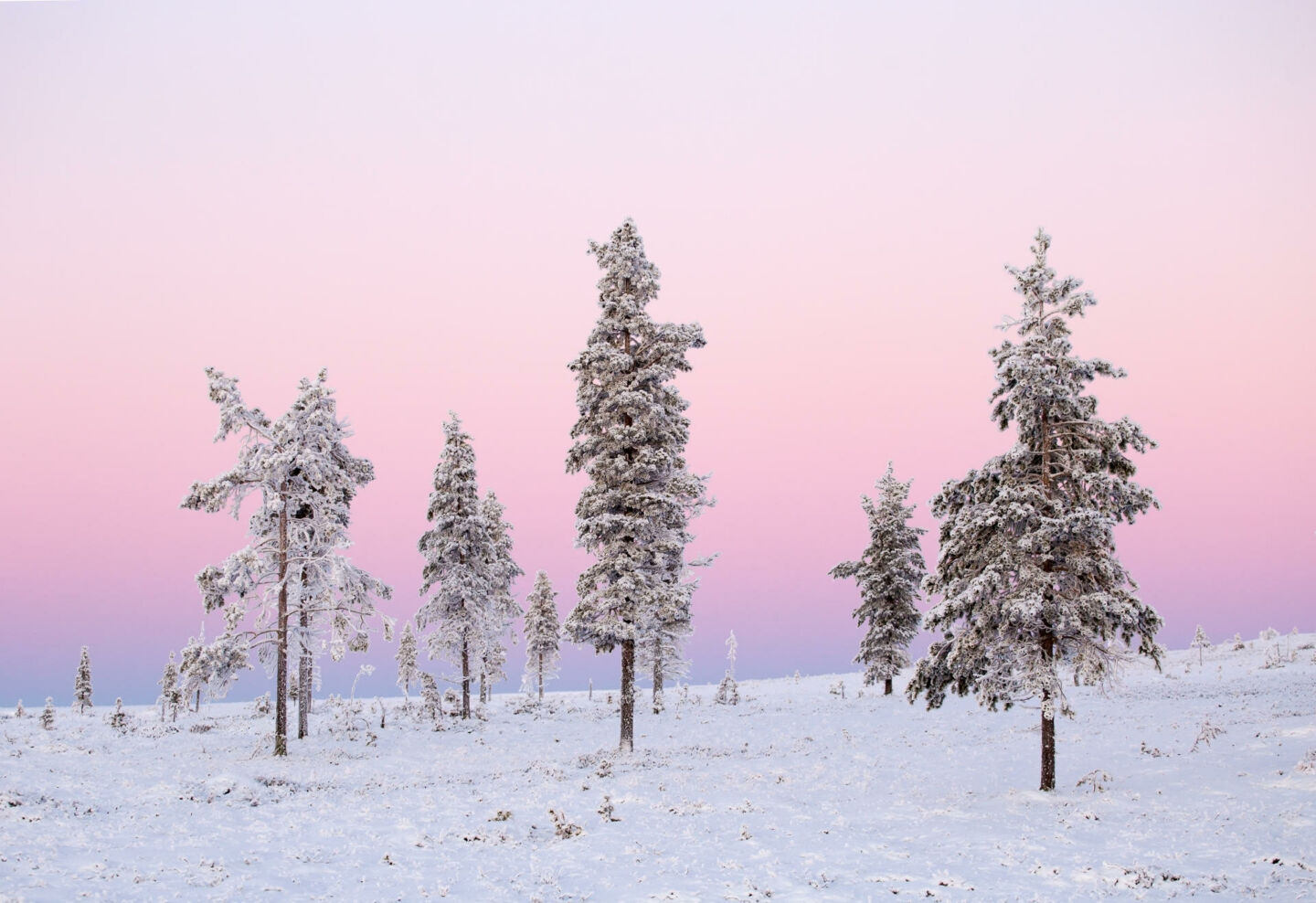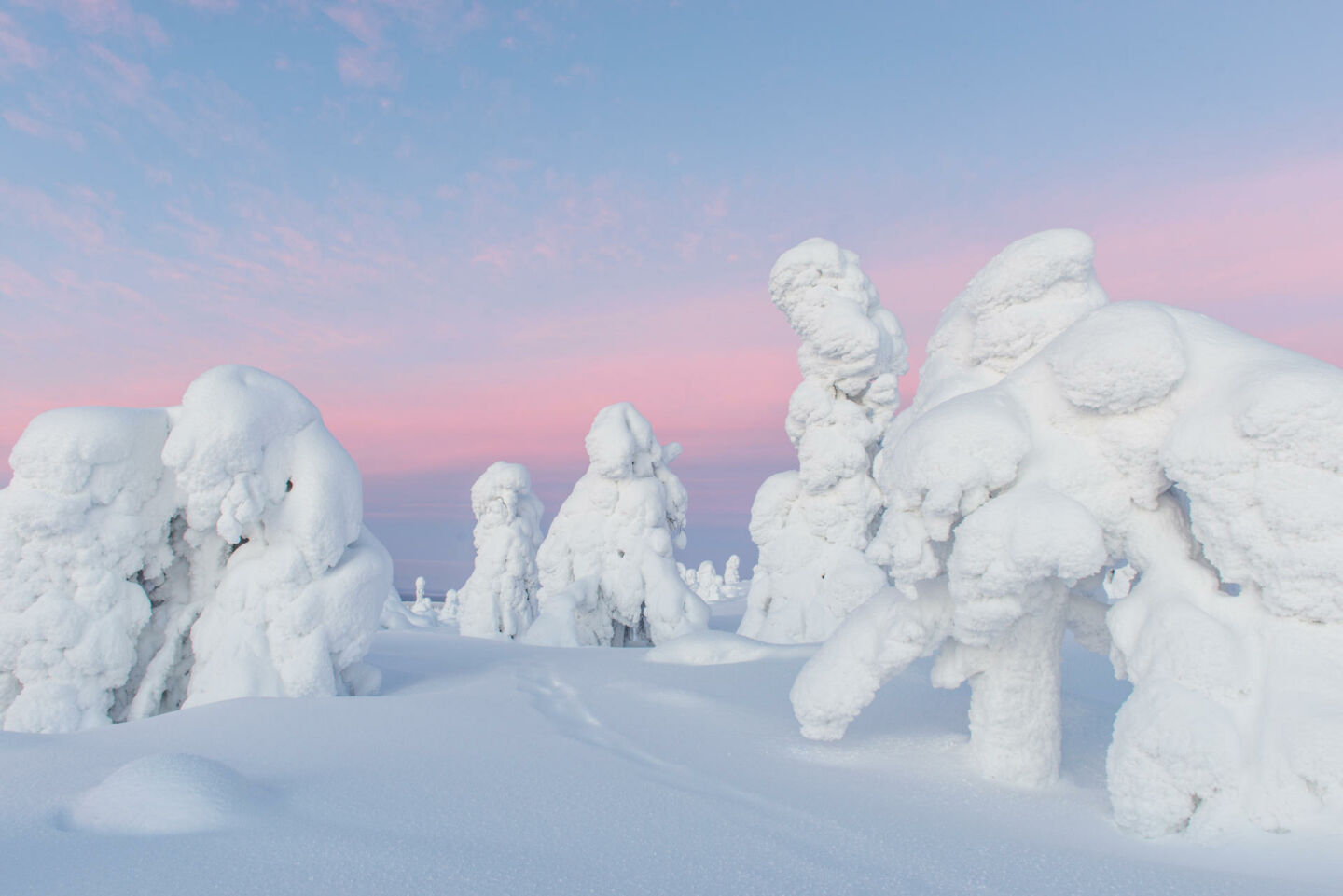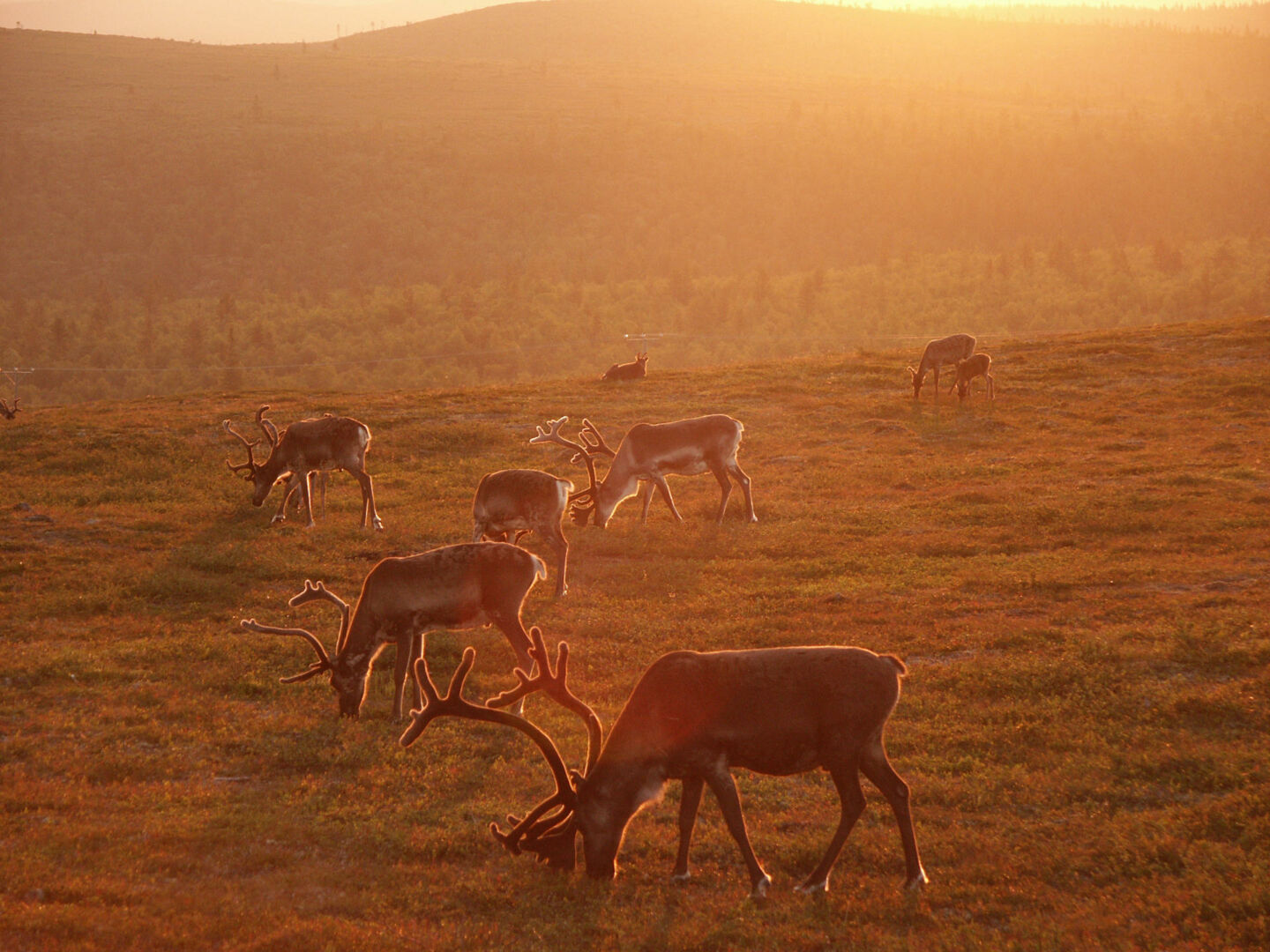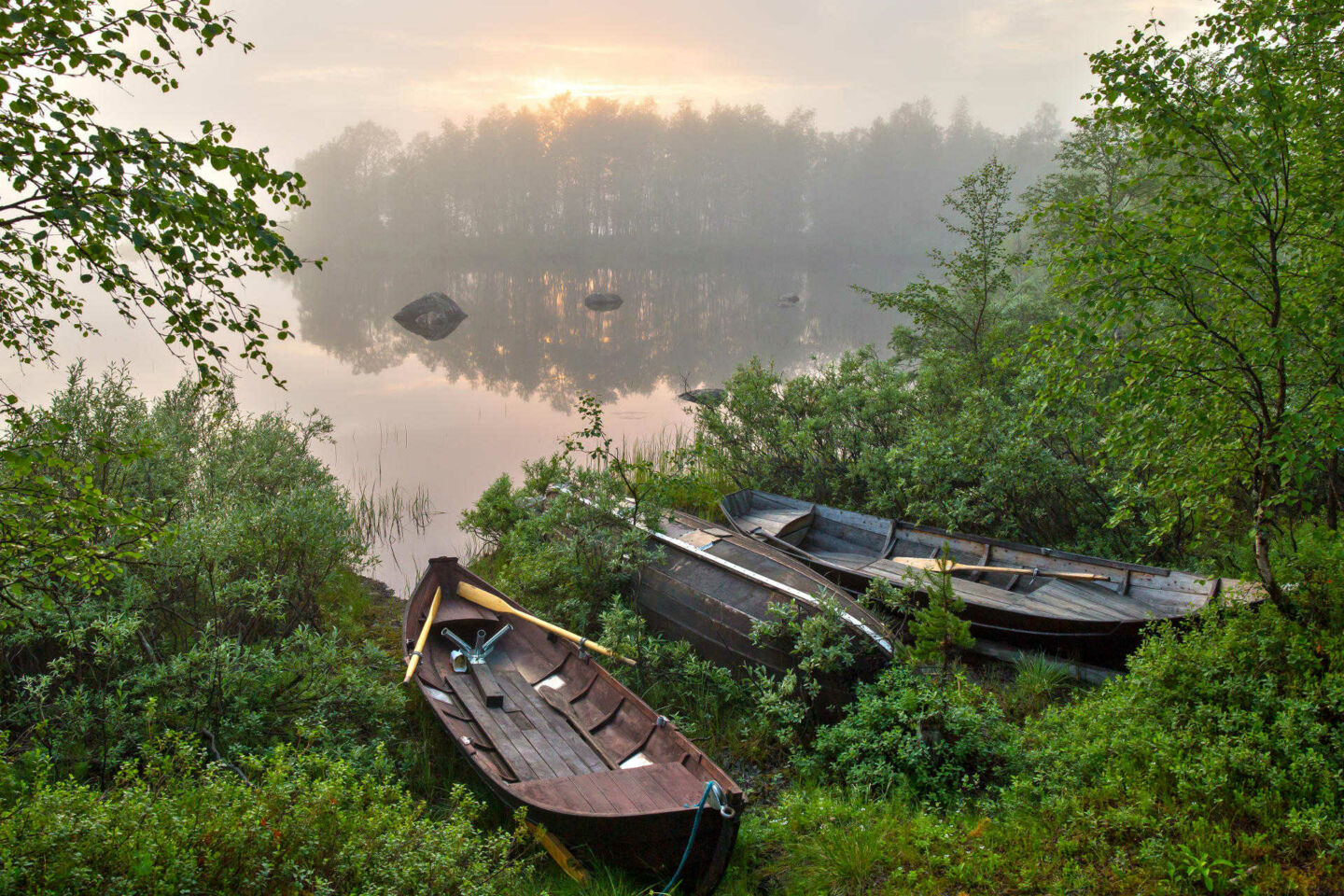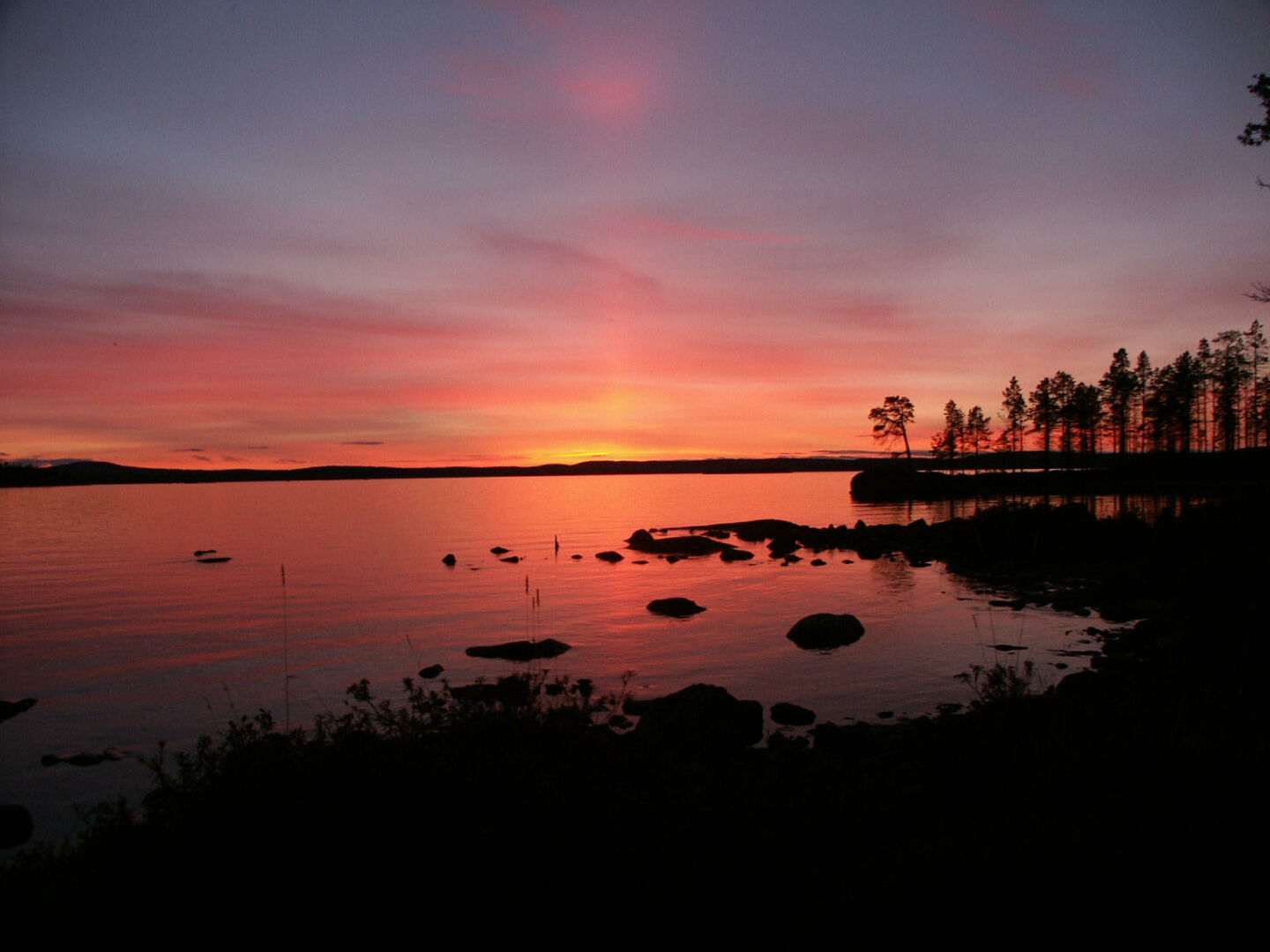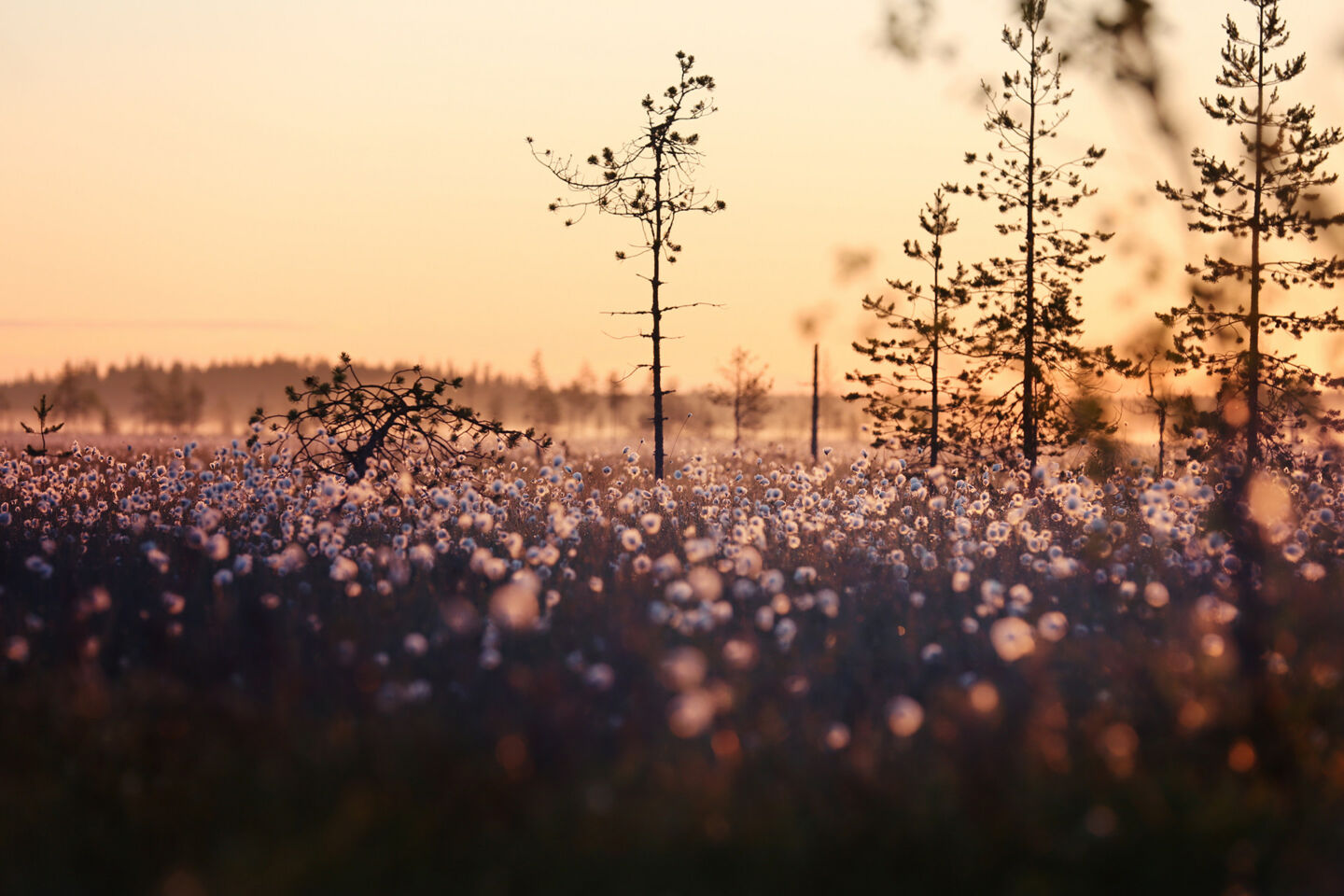The length of daylight in the Arctic ranges from months of sunlight in the summer to colorful autumn days, and long stretches of dark night, broken by the pastels of Polar Night.
Lapland is famous for the Polar Night in the heart of winter when the hidden sun paints the landscapes with pastels. And for the Midnight Sun, which gives filmmakers continuous daylight for three months. But what about every other time of year? We’ve put together this easy-to-read chart so you can find out exactly how long the day, or night, lasts across Arctic Lapland any time of year.
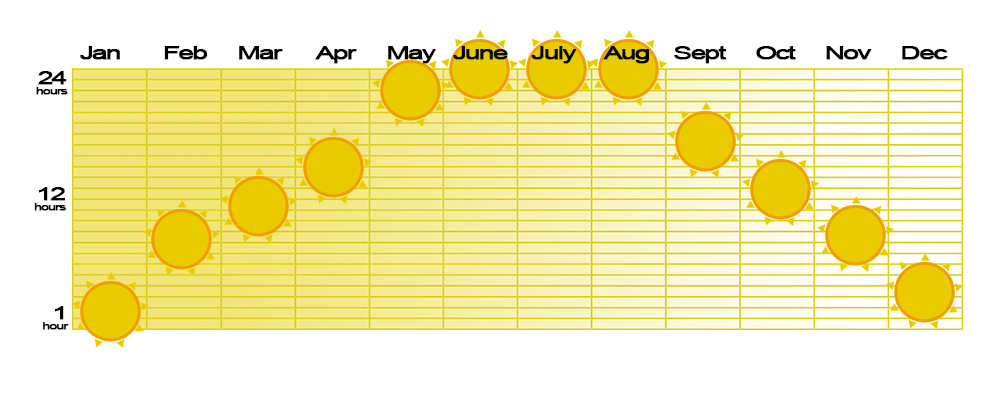
The most important thing to understand and remember about the length of days in the Arctic is that the more north you go, the more extreme your daylight (and nights) get. Since Lapland sits relatively near the North Pole and is more than 500 km (310 miles) long from north to south, lengths of day greatly vary. More northern latitudes see days growing longer in spring and shorter in autumn faster than less northern latitudes. To help keep it straight, here’s a handy guide of latitudes:
- 90°N – North Pole
- 70°N – Utsjoki
- 69°N – Inari, Ivalo, Kilpisjärvi (Enontekiö)
- 67°N – Kittilä, Muonio, Pelkosseniemi, Salla, Savukoski, Sodankylä
- 66.5°N – Arctic Circle
- 66°N – Posio, Ranua
- 60°N Helsinki
For the following examples, we’ve chosen Utsjoki, Ivalo and the Arctic Circle to help clarify how much daylight a Lapland location might have.
DARKEST DAYS
The northernmost region of Finland sits largely above the Arctic Circle, giving it nights that seemingly last forever. At the northern border, Polar Night continues unbroken for two months. As the day approaches, the combination of low light and heavy snow cover produce the famous “blue moment,” washing the landscape in shades of blue, starting from intense dark indigo that slowly brightens to a soft light blue. During the short day, the sky becomes a lighter shade of purple and pink, and the hiding sun produces intense skylines against the horizon. Local crews have extensive knowledge in capturing blue moments and the colors of Polar Night.
The equinox happens in late September when there are 12 hours of daylight and 12 hours of the night pretty much everywhere in Lapland. From then, the north begins to get more night than day, and the farther north you go, the faster this happens. Here’s some handy info to help you determine how much light (or night) you’ll have for your next Arctic production.
Arctic Circle
By definition, locations on the Arctic Circle locations get one 24-hour period of Polar Night, though it’s common not to see the sun for a week on either side due to geological or architectural reasons.
| Day Equinox (Sep 20) November 1 Christmas Valentine’s Day (Equinox) March 20 |
Length of day (hours) 12 7.5 3 11.5 12 |
Ivalo
Ivalo sits about 280 km north of the Arctic Circle, and so it has a true polar night that lasts a few weeks.
| Day Equinox (Sep 20) November 1 Christmas Valentine’s Day (Equinox) March 20 |
Length of day (hours) 12 7 0 7.5 12 |
Utsjoki
The northernmost municipality in Finland is Utsjoki, and the northern border sits 400 km north of the Arctic Circle. Polar Night begins in late November and lasts until late January.
| Day Equinox (Sep 20) November 1 Christmas Valentine’s Day (Equinox) March 20 |
Length of day (hours) 12 6.5 0 7 12 |
Warm and Wild
Spring days stretch out longer and longer until May, when the night is virtually non-existent throughout Lapland. Instead of night, the sky simply darkens, and the sun doesn’t dip too far under the horizon. In Utsjoki, as far north as Finland goes, the sky doesn’t darken at all, and the sun just circles the skies continuously, providing daylight all night long.
Utsjoki
| Day Equinox (March 20) May 1 July 1 Sept 1 Equinox (Sept 20) |
Length of day (hours) 12 18.75 24 15.5 12 |
Ivalo
| Day Equinox (March 20) May 1 July 1 Sept 1 Equinox (Sept 20) |
Length of day (hours) 12 18.25 24 15.25 12 |
Arctic Circle
Technically, there’s only one day per year on the Arctic Circle when the sun doesn’t set. But in practice, the Nightless Night season lasts for a month, from the beginning of June to the beginning of July. The nights are already bright at the end of May and stay relatively bright until the beginning of August.
| Day Equinox (March 20) May 1 July 1 Sept 1 Equinox (Sept 20) |
Length of day (hours) 12 17.5 24 15 12 |
If you want to see for yourself the quantity and quality of daylight in Lapland, check out this wonderful video from production service provider Flatlight Creative House:



